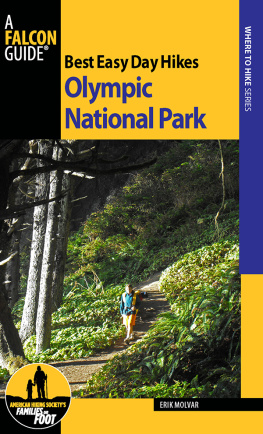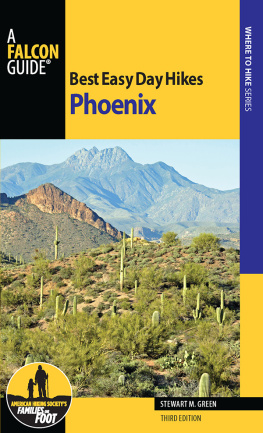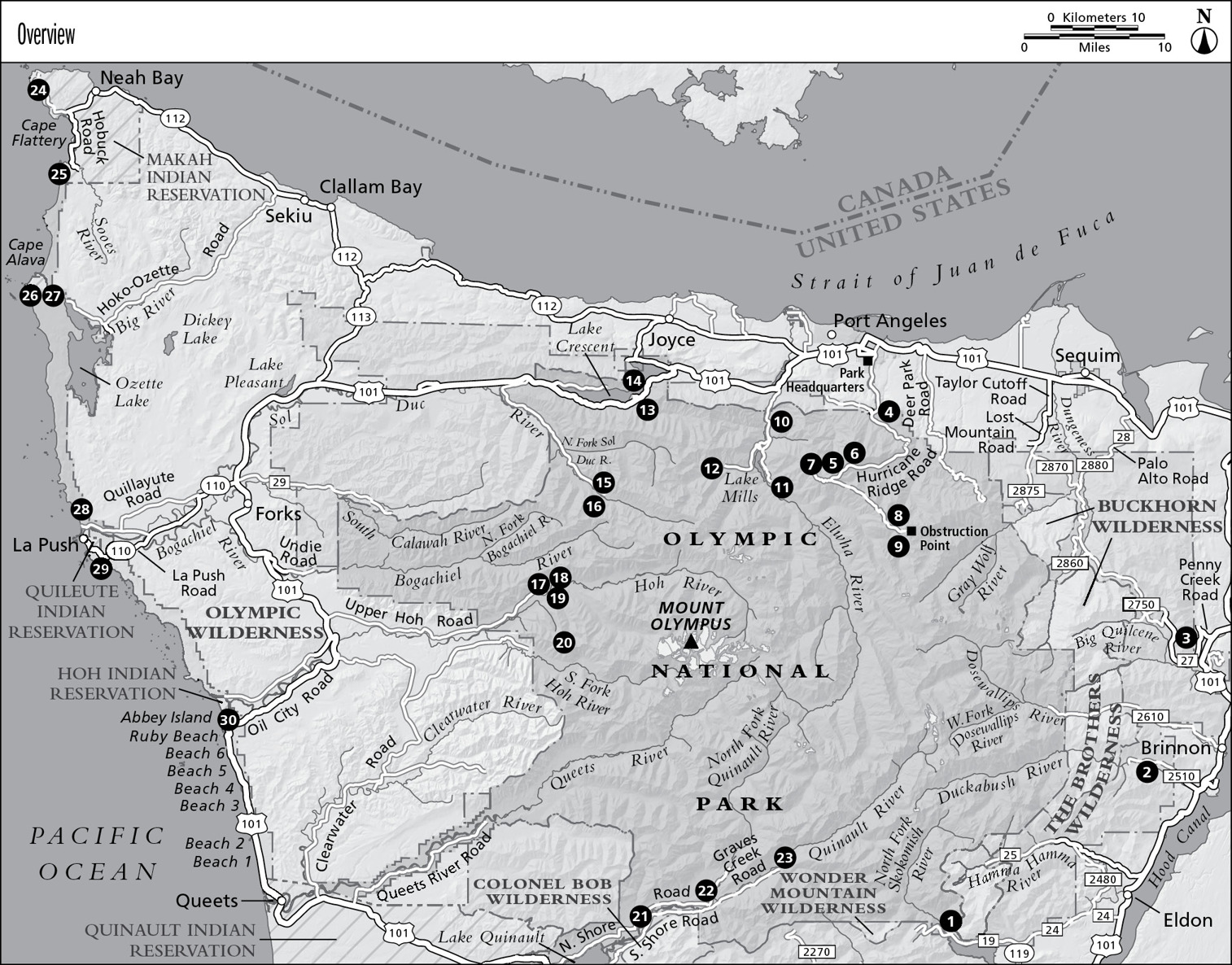Best Easy Day Hikes Series
Best Easy Day Hikes
Olympic National Park
Third Edition
Erik Molvar


An imprint of Rowman & Littlefield
Falcon, FalconGuides, and Outfit Your Mind are registered trademarks of Rowman & Littlefield.
Distributed by National Book Network
Copyright 2015 by Rowman & Littlefield
A previous edition of this book was published by The Globe Pequot Press in 2008.
Maps revised and updated by Roberta Stockwell Rowman & Littlefield
All rights reserved . No part of this book may be reproduced in any form or by any electronic or mechanical means, including information storage and retrieval systems, without written permission from the publisher, except by a reviewer who may quote passages in a review.
British Library Cataloguing-in-Publication Information Available
Library of Congress Cataloging-in-Publication Data
Molvar, Erik.
Best easy day hikes Olympic National Park / Erik Molvar. -- Third edition.
pages cm
Distributed by NATIONAL BOOK NETWORK.
ISBN 978-1-4930-0969-5 (pbk. : alk. paper) -- ISBN 978-1-4930-1475-0 (electronic) 1. Hiking--Washington (State)--Olympic Mountains--Guidebooks. 2. Trails--Washington (State)--Olympic Mountains--Guidebooks. 3. Olympic Mountains (Wash.)--Guidebooks. I. Title.
GV199.42.W22O486 2015
796.510979794--dc23
2015011329
 The paper used in this publication meets the minimum requirements of American National Standard for Information SciencesPermanence of Paper for Printed Library Materials, ANSI/NISO Z39.48-1992.
The paper used in this publication meets the minimum requirements of American National Standard for Information SciencesPermanence of Paper for Printed Library Materials, ANSI/NISO Z39.48-1992.
The author and Rowman & Littlefield assume no liability for accidents happening to, or injuries sustained by, readers who engage in the activities described in this book.
Contents
Acknowledgments
Thanks to Bill Baccus and Ruth Scott for providing information and reviewing this book. The introductory material is largely the work of Bill Schneider.
Introduction
Whats a best easy hike?
Our national parks and forests serve as windows to the natural world, reservoirs of natural beauty and grandeur, and wellsprings of inspiration. As such, they are magnets to people who seek to reestablish their ties with nature, learn more about the world in which we live, or simply find a quiet escape from the hustle and bustle of modern society. Olympic National Park features mountain fastnesses clad in glaciers, mysterious rainforests, and a wild and rugged coastline, inviting the visitor to step into the natural world.
Anyone who travels widely in these areas will soon notice that there are two distinct categories of visitorsthose who want to immerse themselves in the wilderness of Olympic National Park for several days at a time, and those who only have a day or two and would like a choice sampling of the special features of the area. This book is for the second group.
The materials for this guide were gathered as I researched the much larger and more comprehensive book, Hiking Olympic National Park. That larger book covers trails in the park and the surrounding areas and every coastal hiking route, including those that are neither best nor easy. Best Easy Day Hikes Olympic National Park includes only short, less strenuous hikes that showcase the best features of the Olympic Peninsula.
These hikes vary in length, but most are short (less than 5 miles). Most lack big hills, and those few long grades that appear in this book are tackled in a leisurely fashion. All hikes are on easy-to-follow trails and beaches with no route-finding challenges. Trailhead access is easy for all hikes, and you can reach any of these trailheads with a low-clearance passenger car.
To aid in the selection of a hike that suits particular needs and abilities, each is rated easy, moderate, or more challenging. Bear in mind that even the most challenging routes can be made easy by hiking within your limits and taking rests when you need them.
- Easy hikes are generally short and flat, taking no longer than 1 to 2 hours to complete.
- Moderate hikes involve relatively mild changes in elevation and will take 1 to 2.5 hours to complete.
- More challenging hikes feature some steep stretches, greater distances, and generally take longer than 2.5 hours to complete.
These are completely subjective ratingsconsider that what you think is easy is entirely dependent on your level of fitness and the adequacy of your gear (primarily shoes). If you are hiking with a group, you should select a hike with a rating thats appropriate for the least fit and prepared in your party.
Some of the hikes in this book might seem easy to some but more difficult to others. To help you decide, Ive also ranked the hikes from easiest to most challenging. Please keep in mind that long does not always equal difficult. Other factors, such as elevation gain and trail conditions, have to be considered.
I hope you thoroughly enjoy your best easy hiking through the natural wonders of Olympic National Park.
Zero Impact
Traveling in a national park such as Olympic is like visiting a famous museum. You obviously dont want to leave your mark on an art treasure in the museum. If everybody who visited the museum left one tiny mark, the piece of art would be destroyedand what would a big building full of trashed art be worth? The same goes for pristine wilderness like that found in Olympic National Park. If we all left just one little mark on the landscape, the wilderness would soon be despoiled.
A wilderness can accommodate plenty of human use as long as everybody treats it with respect. But a few thoughtless or uninformed visitors can ruin it for everyone who follows. And the need for good manners applies to all wilderness visitors, not just backpackers. Day hikers should also adhere strictly to the zero impact principles. The book Leave No Trace is a valuable resource for learning more about these principles.
Three FalconGuides Principles of Zero Impact
- Leave with everything you brought with you.
- Leave no sign of your visit.
- Leave the landscape as you found it.
Most of us know better than to litterin or out of the wilderness. Even the tiniest scrap of paper left along the trail or at the campsite detracts from the pristine character of the Olympic landscape. This means that you should pack out everything, even biodegradable items such as orange peels, which can take years to decompose. Its also a good idea to pick up any trash that less considerate hikers have left behind.
To avoid damaging the trailside soil and plants, stay on the main path. Avoid cutting switchbacks and venturing onto fragile vegetation. When hiking on trailless beaches, stick to unvegetated surfaces below the storm tide mark, and dont disturb the fragile animals in tide pools. When taking a rest stop, select a durable surface like a bare log, a rock, or a sandy beach.
Dont pick up souvenirs, such as rocks, antlers, feathers, or wildflowers. The next person wants to discover them, too, and taking such souvenirs violates park regulations.
Avoid making loud noises that disturb the silence that others may be enjoying. Remember, sound travels easily in the outdoors. Be courteous.
Next page





 The paper used in this publication meets the minimum requirements of American National Standard for Information SciencesPermanence of Paper for Printed Library Materials, ANSI/NISO Z39.48-1992.
The paper used in this publication meets the minimum requirements of American National Standard for Information SciencesPermanence of Paper for Printed Library Materials, ANSI/NISO Z39.48-1992.